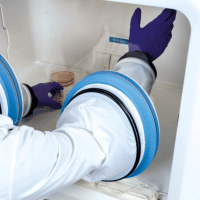In scientific research, understanding the effects of low oxygen levels on cells, tissues, and organisms is crucial for studying various conditions and advancing medical knowledge. Hypoxia chambers play a significant role in providing controlled environments for such research.
Hypoxia chambers are self-contained and sealed chambers that create a low-oxygen environment, mimicking conditions of reduced oxygen levels. These chambers are designed to fit inside laboratory incubators, which makes them ideal for tissue culture and cell studies and for gaining insights into hypoxia-induced conditions and various diseases.
This blog post will provide an overview of hypoxia chambers, their applications, and what models are available on the market.
Understanding Hypoxia Chambers in Scientific Research
Comprehending the applications and capabilities of hypoxia chambers is vital for scientific experts engaged in various fields. One of the key reasons why understanding the use of hypoxia chambers is crucial is their ability to simulate low-oxygen conditions in a controlled environment.
Hypoxia, or reduced oxygen levels, is one of the key factors in several conditions and diseases. By subjecting cells, tissues, and organisms to hypoxic conditions within these chambers, researchers can study the adaptive responses and physiological changes that occur as a result. This knowledge is crucial for understanding the underlying mechanisms and pathways involved in hypoxia-induced diseases such as stroke, cancer, pulmonary diseases, and developmental disorders. As a result, scientific researchers can also support the development of treatments and improve patient outcomes.
Types of Hypoxia Chambers
Hypoxia chambers are available in several configurations, but the most suitable choice will depend on the studies conducted. Although we are not looking at human studies in this blog post, hypoxia chambers are available for researchers looking to understand the impact of low oxygen levels on the human body in connection with sleep apnea or chronic hypoxia, as well as in occupational settings for airline crew or astronomers.1 Below, we look at two other types of hypoxia chambers used in scientific research.
Hypoxia Chambers for Cell Culture
Hypoxia chambers are extensively used in tissue culture applications. They enable researchers to analyze changes in gene expression, protein synthesis, cellular metabolism, and signaling pathways to decipher how cells and tissues respond to hypoxia. Additionally, hypoxia chamber studies enable the investigation of tissue and organ-level responses, providing valuable insights into the impact of low-oxygen conditions on overall physiological function.
Hypoxia Chambers for Animal Studies
Animal studies play a vital role in understanding the physiological and pathological effects of hypoxia. Hypoxia chambers designed for animal studies provide controlled environments to investigate the impact of low oxygen levels on various physiological systems. These chambers simulate high-altitude and low-pressure conditions, allowing researchers to explore the effects of hypoxia on cardiovascular function, neurological responses, and more.
Hypoxia Chambers from Scintica Instruments
Scintica is a renowned company at the forefront of supplying cutting-edge biosafety, contamination control, and controlled atmosphere equipment. With a strong focus on anaerobic and precision low-oxygen cell culture solutions, Scintica leads the way in providing research labs with the tools necessary for cancer, stem cell, and microbiology studies.
Just one example of our products is our InvivO2 workstation. The InvivO2 is adaptable and easy to use. It is equipped with innovative features, enabling the study of complex cell interactions under precise physiological oxygen conditions.
To learn more about the full range of hypoxia chambers we offer, contact a member of Scintica Instruments today.
References
